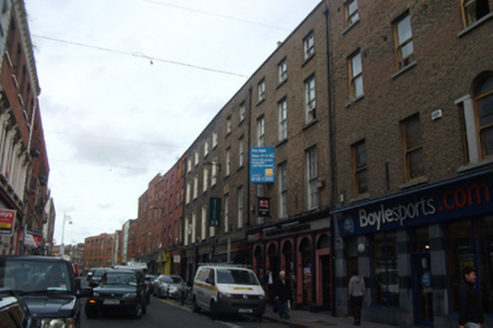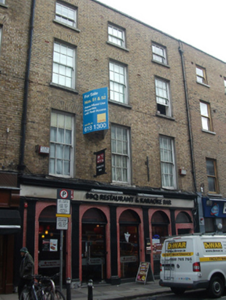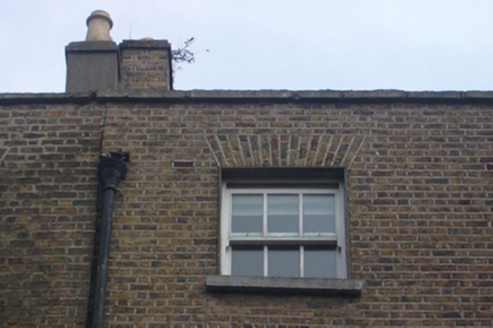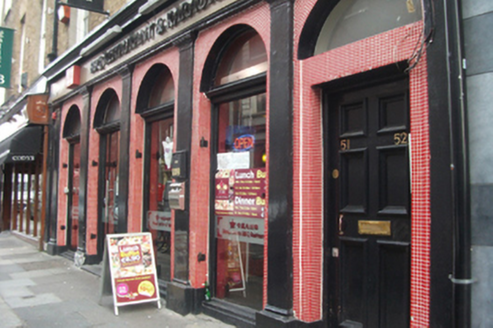Survey Data
Reg No
50010570
Rating
Regional
Categories of Special Interest
Architectural
Original Use
House
Historical Use
Shop/retail outlet
In Use As
Restaurant
Date
1840 - 1845
Coordinates
315333, 234579
Date Recorded
28/10/2011
Date Updated
--/--/--
Description
Terraced three-bay four-storey townhouse over concealed basement, built 1841-4, with arcaded shopfront to ground floor. Now in mixed commercial use with large flat-roofed rear extension. M-profile slate roof with yellow brick chimneystacks to north party wall. Roof concealed behind yellow brick parapet wall with granite coping and cast-iron hoppers and downpipes breaking through to either end. Yellow brick walls laid in Flemish bond with original lime pointing to first floor. Gauged brick flat-arched window openings with patent rendered reveals, granite sills and replacement timber sliding sash windows. Round arches to ground floor with recent mosaic tiling and fixed-pane display windows with fanlights, each flanked by painted masonry Doric pilasters on plinth blocks supporting fascia and cornice. Glazed doors to shop and square-headed door opening to southmost bay with replacement timber panelled door and fanlight, providing access to upper floors.
Appraisal
This building retains an unusual surviving stucco and timber shopfront and is documented to be the largest of four buildings put to tender together by J.M. Burrows in 1841. Three bays wide the building stands out on the street as one of the grander edifices and maintains an early aspect while making a positive contribution to the varied yet coherent historic streetscape. Capel Street was laid out in 1680 by Humphrey Jervis as a prestigious residential street and named after Arthur Capel, Earl of Essex. By 1800 the street had become one of the city’s principal commercial thoroughfares with the current plot ratios reflecting the layout of that period.







